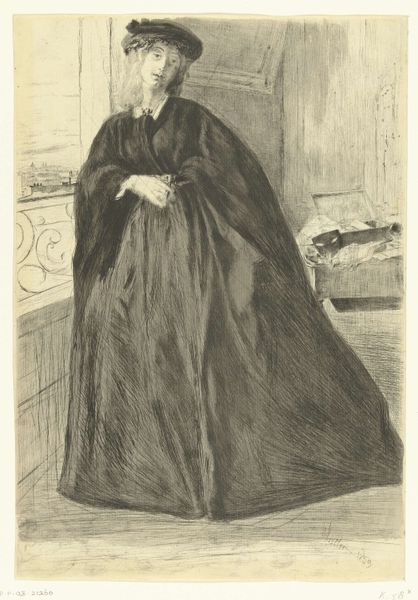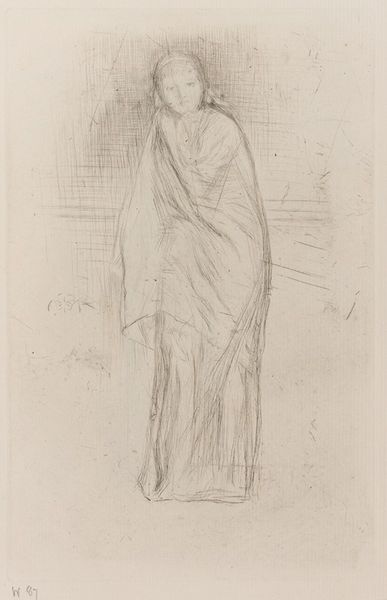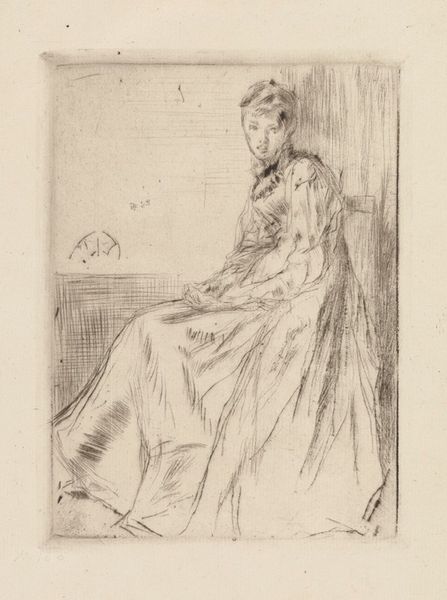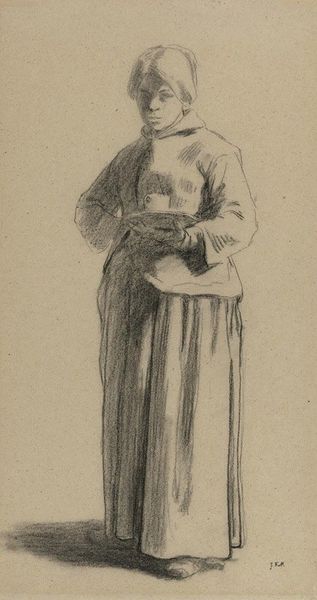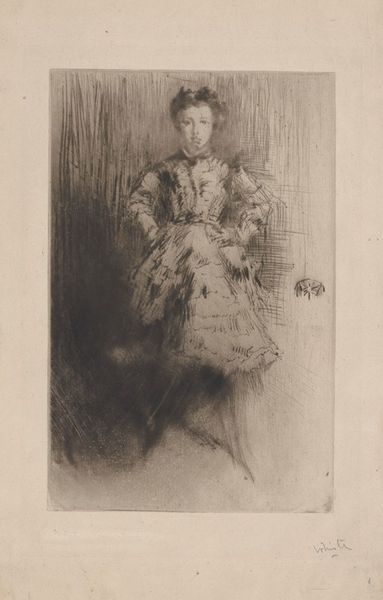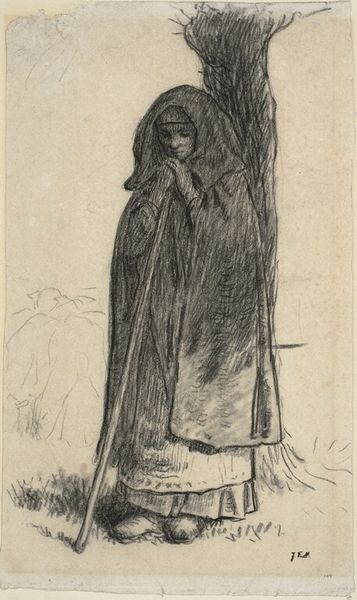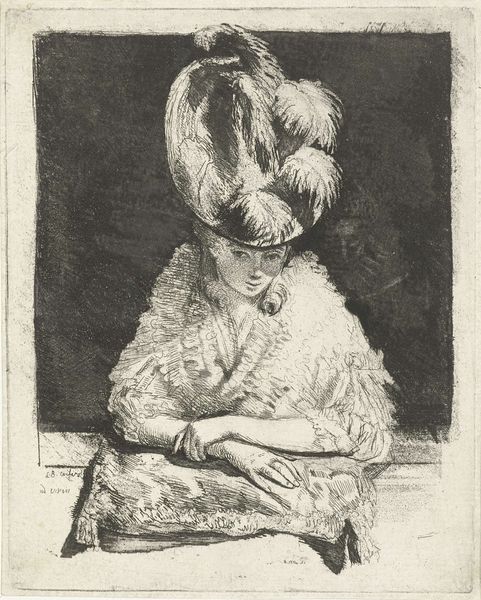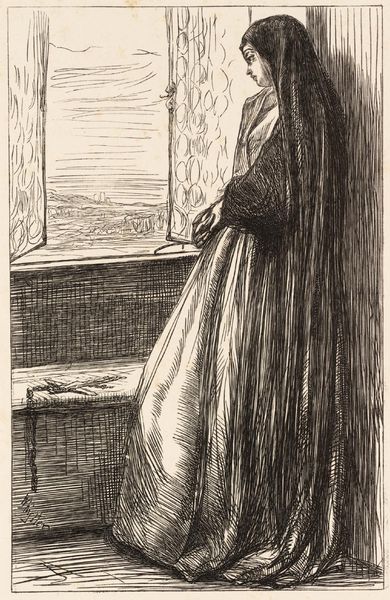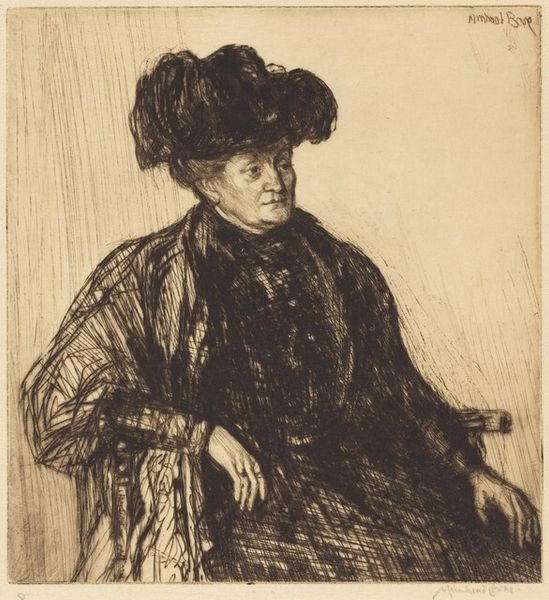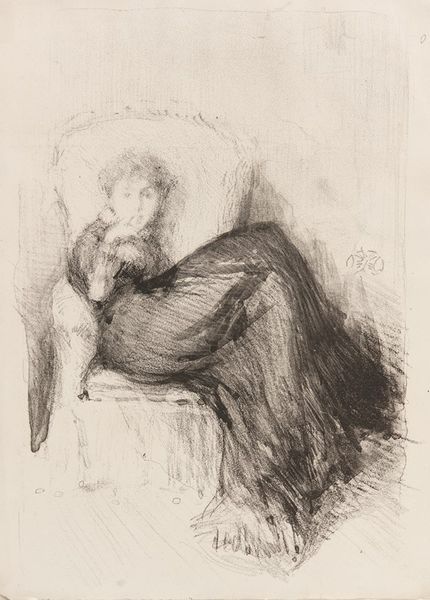
drawing, pencil
#
portrait
#
drawing
#
pencil drawing
#
pencil
#
academic-art
#
realism
Copyright: Public Domain: Artvee
Curator: Before us is James Abbott McNeill Whistler's "Finette," a pencil drawing dating back to 1859. What's your initial take on this portrait? Editor: It feels melancholic, almost haunted. The starkness of the pencil against the paper and the woman's averted gaze contribute to this feeling of quiet resignation. The composition, too, is striking—the figure is dominant, almost looming. Curator: Dominant indeed, especially if we consider the availability and distribution of materials that contributed to its making. Paper became more industrialized in the mid-19th century, leading to increased availability for artists to experiment and produce such a portrait as a reflection of social issues. Editor: That industrial connection is fascinating, but it's hard to ignore Whistler's skill in rendering textures, and he must be acutely aware of formal arrangements. Look at the draping of her gown. See the balance he achieves between detail in the fabric and the relatively empty space. Semiotically, her costume also invites analysis. Her simple costume symbolizes that women belonged at home in this era. Curator: The costume may communicate submission, but I also read defiance in the way her dress overwhelms the smallness of her physical presence; maybe she resists this prescribed idea of women's placement in society, finding power through what she makes, wears, and how her likeness gets circulated as an image. Do you think of this aspect of the woman’s labor—performing femininity for portraits—at all in your own analysis? Editor: Well, such speculation falls outside the rigorous boundaries of formalism, which centers solely on tangible artwork attributes. While cultural background could matter, it's only secondary. And while there are those vague references of women not having many places in public spheres at that time, our discussion needs focus. To be precise, I value her subtle details achieved by pencil strokes! Curator: To bring together what we each focus on: her details achieved with these relatively accessible materials— pencil on paper—speak volumes on gender relations as social material! Editor: Quite an intersection, focusing both on the hand of the artist and its broader connections. A satisfying end to our examination!
Comments
No comments
Be the first to comment and join the conversation on the ultimate creative platform.
